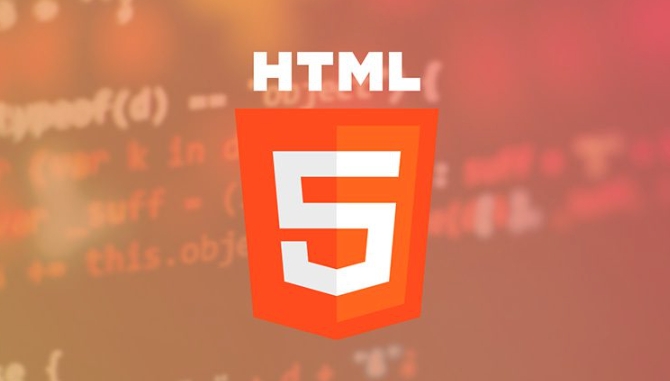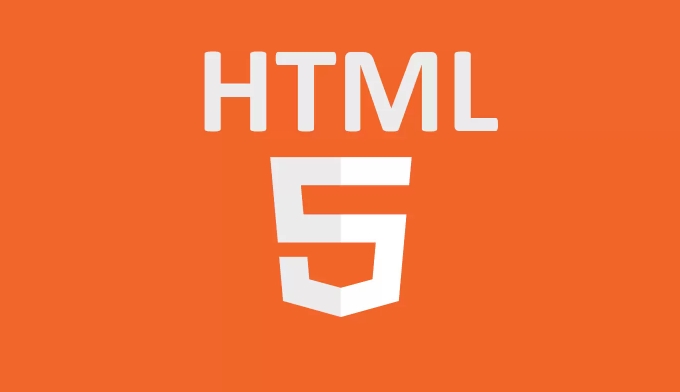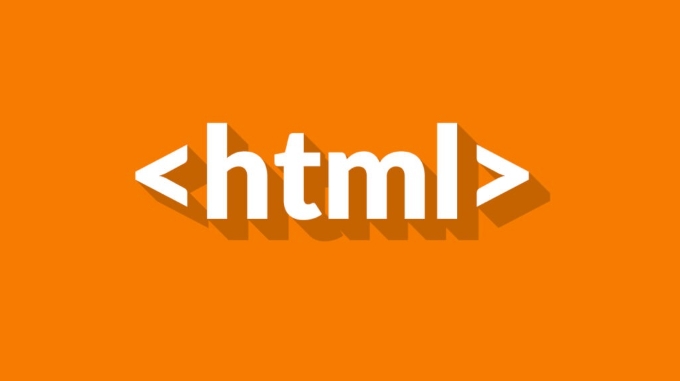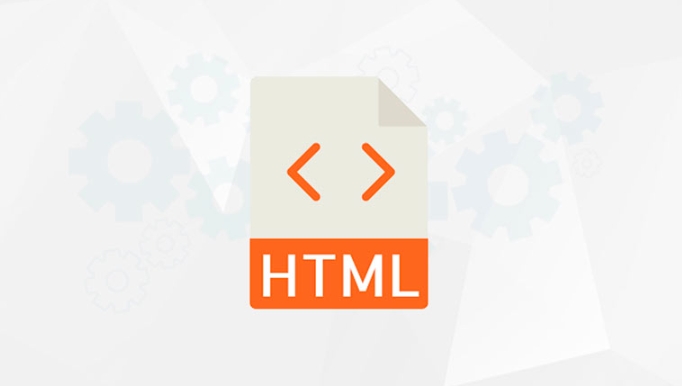HTML comments should be written because it can improve code readability and maintenance efficiency, especially when teamwork and project structure is complex. Clear comments can indicate the purpose of the block, explain special logic, or remind attention, such as using "<!-- Navigation bar starts here -->" to identify the starting position of the navigation bar to help others quickly understand the code structure. Effective comments should be avoided in general terms and specific functions or backgrounds should be explained. For example, the prompt content of "<!-- This section is generated dynamically, do not edit manually -->" is dynamically generated. At the same time, meaningless comments such as "<!-- Start of div -->", not embedding entire script code, not writing emotional statements, and regularly cleaning outdated comments to keep the code tidy.

Writing HTML comments is actually quite easy to ignore, but it is really helpful for teamwork and subsequent maintenance. A clear and standardized comment allows you or others to quickly understand the code structure, especially after the project becomes larger. Don't underestimate a few lines of comments, as it can save a lot of time if you use them well.

Why should I write HTML comments
HTML files are usually more intuitive in structure, but some parts may be logically complex or have deep nesting, such as a large navigation bar, dynamically inserted content areas, etc. Adding comments at this time is like tagging the code and telling others "what is here" or even "why do you need to write this way".
For example:
You see a piece of code suddenly ending a div with <!-- End of main content --> , and you know that the block is over, not just closed. This kind of tip is especially useful when debugging.

How to write valid HTML comments
Don't just write "Here is the head", that's too general. Good comments should explain the purpose of the structure or special logic , and sometimes you can add some reminders.
Common writing methods:

-
<!-- Navigation bar starts here --> -
<!-- This section is generated dynamically, do not edit manually --> -
<!-- Temporary fix for mobile layout, needs review later -->
If you use a specific class name structure to implement the layout, you can also explain it briefly, for example:
<!-- Using flexbox grid with .row and .col classes -->
What are the mistakes to avoid
Many people tend to go to two extremes when writing comments: either don’t write anything or write a lot of nonsense. The following are unnecessary writing:
-
<!-- Start of div -->Immediately afterwards<div> -- It's too obvious, needless to say.<li> Copy the entire CSS or JS directly into the comments to make the HTML long and messy.</li> <li> Writing too many personal emotions, such as "Who wrote this broken code", although it is exciting for a while, it is not conducive to collaboration.</li> <p> Also, remember to clean up old comments regularly. If a certain piece of code is deleted, the relevant comments should also be deleted, otherwise it will mislead others.</p> <hr> <p> Basically that's it. Writing comments is not difficult, the key is to keep them concise and practical. Don't be too casual, don't be too long-winded, just find the balance point.</p> </div>
The above is the detailed content of Best Practices for HTML Comments. For more information, please follow other related articles on the PHP Chinese website!

Hot AI Tools

Undress AI Tool
Undress images for free

Undresser.AI Undress
AI-powered app for creating realistic nude photos

AI Clothes Remover
Online AI tool for removing clothes from photos.

Clothoff.io
AI clothes remover

Video Face Swap
Swap faces in any video effortlessly with our completely free AI face swap tool!

Hot Article

Hot Tools

Notepad++7.3.1
Easy-to-use and free code editor

SublimeText3 Chinese version
Chinese version, very easy to use

Zend Studio 13.0.1
Powerful PHP integrated development environment

Dreamweaver CS6
Visual web development tools

SublimeText3 Mac version
God-level code editing software (SublimeText3)

Hot Topics
 Applying Semantic Structure with article, section, and aside in HTML
Jul 05, 2025 am 02:03 AM
Applying Semantic Structure with article, section, and aside in HTML
Jul 05, 2025 am 02:03 AM
The rational use of semantic tags in HTML can improve page structure clarity, accessibility and SEO effects. 1. Used for independent content blocks, such as blog posts or comments, it must be self-contained; 2. Used for classification related content, usually including titles, and is suitable for different modules of the page; 3. Used for auxiliary information related to the main content but not core, such as sidebar recommendations or author profiles. In actual development, labels should be combined and other, avoid excessive nesting, keep the structure simple, and verify the rationality of the structure through developer tools.
 How to group options within a select dropdown using html?
Jul 04, 2025 am 03:16 AM
How to group options within a select dropdown using html?
Jul 04, 2025 am 03:16 AM
Use tags in HTML to group options in the drop-down menu. The specific method is to wrap a group of elements and define the group name through the label attribute, such as: 1. Contains options such as apples, bananas, oranges, etc.; 2. Contains options such as carrots, broccoli, etc.; 3. Each is an independent group, and the options within the group are automatically indented. Notes include: ① No nesting is supported; ② The entire group can be disabled through the disabled attribute; ③ The style is restricted and needs to be beautified in combination with CSS or third-party libraries; plug-ins such as Select2 can be used to enhance functions.
 Implementing Clickable Buttons Using the HTML button Element
Jul 07, 2025 am 02:31 AM
Implementing Clickable Buttons Using the HTML button Element
Jul 07, 2025 am 02:31 AM
To use HTML button elements to achieve clickable buttons, you must first master its basic usage and common precautions. 1. Create buttons with tags and define behaviors through type attributes (such as button, submit, reset), which is submitted by default; 2. Add interactive functions through JavaScript, which can be written inline or bind event listeners through ID to improve maintenance; 3. Use CSS to customize styles, including background color, border, rounded corners and hover/active status effects to enhance user experience; 4. Pay attention to common problems: make sure that the disabled attribute is not enabled, JS events are correctly bound, layout occlusion, and use the help of developer tools to troubleshoot exceptions. Master this
 Configuring Document Metadata Within the HTML head Element
Jul 09, 2025 am 02:30 AM
Configuring Document Metadata Within the HTML head Element
Jul 09, 2025 am 02:30 AM
Metadata in HTMLhead is crucial for SEO, social sharing, and browser behavior. 1. Set the page title and description, use and keep it concise and unique; 2. Add OpenGraph and Twitter card information to optimize social sharing effects, pay attention to the image size and use debugging tools to test; 3. Define the character set and viewport settings to ensure multi-language support is adapted to the mobile terminal; 4. Optional tags such as author copyright, robots control and canonical prevent duplicate content should also be configured reasonably.
 How to associate captions with images or media using the html figure and figcaption elements?
Jul 07, 2025 am 02:30 AM
How to associate captions with images or media using the html figure and figcaption elements?
Jul 07, 2025 am 02:30 AM
Using HTML sums allows for intuitive and semantic clarity to add caption text to images or media. 1. Used to wrap independent media content, such as pictures, videos or code blocks; 2. It is placed as its explanatory text, and can be located above or below the media; 3. They not only improve the clarity of the page structure, but also enhance accessibility and SEO effect; 4. When using it, you should pay attention to avoid abuse, and apply to content that needs to be emphasized and accompanied by description, rather than ordinary decorative pictures; 5. The alt attribute that cannot be ignored, which is different from figcaption; 6. The figcaption is flexible and can be placed at the top or bottom of the figure as needed. Using these two tags correctly helps to build semantic and easy to understand web content.
 Best HTML tutorial for beginners in 2025
Jul 08, 2025 am 12:25 AM
Best HTML tutorial for beginners in 2025
Jul 08, 2025 am 12:25 AM
TolearnHTMLin2025,chooseatutorialthatbalanceshands-onpracticewithmodernstandardsandintegratesCSSandJavaScriptbasics.1.Prioritizehands-onlearningwithstep-by-stepprojectslikebuildingapersonalprofileorbloglayout.2.EnsureitcoversmodernHTMLelementssuchas,
 How to embed content from another site using the html iframe tag?
Jul 04, 2025 am 03:17 AM
How to embed content from another site using the html iframe tag?
Jul 04, 2025 am 03:17 AM
Use tags to embed other website content into your own web page. The basic syntax is:, you can add width, height, and style="border:none;" to control the appearance; in order to achieve responsive layout, you can set the size through percentage or use containers to combine padding and absolute positioning to maintain the aspect ratio, while paying attention to cross-domain restrictions, loading performance, SEO impact, and security policies. Common uses include embedding maps, third-party forms, social media content and internal system integration.
 HTML for email templates tutorial
Jul 10, 2025 pm 02:01 PM
HTML for email templates tutorial
Jul 10, 2025 pm 02:01 PM
How to make HTML mail templates with good compatibility? First, you need to build a structure with tables to avoid using div flex or grid layout; secondly, all styles must be inlined and cannot rely on external CSS; then the picture should be added with alt description and use a public URL, and the buttons should be simulated with a table or td with background color; finally, you must test and adjust the details on multiple clients.






